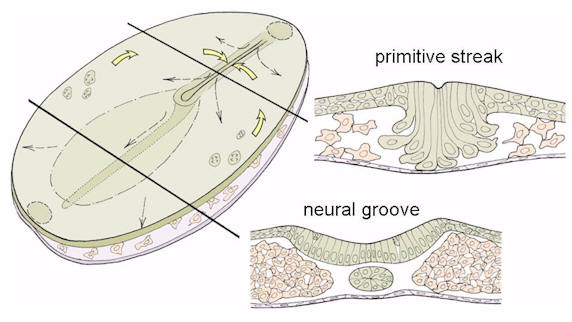I can understand why you follow evolutionary theories, you have a wealth of info that all ties in, and I like the fact that you remember some of the stuff I posted even though you don't agree with it.
I hardly have a wealth of info. Nature does. It's this abundance of natural evidence, and your resistance to it, that makes your thinking so seriously flawed. In all the dialogue I've had with you, you've made no real effort to understand it.
I have never seen any evidence for evolution.
You see it every day. You just ignore it.
Every animal is just a result of variation in principles of design.
Oh really? So now you pretend to know something about all animals? One of the earliest creatures is the cyanobacteria (which left fossils around 3.5 billion years old). It has features of both animals and plants, and is a closely related to both, if not a common ancestor.
The problem with your statement about design is that cyanobacteria are not designed. They are the product of chemistry. You can no longer claim they are "designed" than to say the shape of the water molecule is "designed". It's not. It has a shape that best distributes the electrical charge, in obedience to natural law.
Is this designed? No, it's the intrinsic property of the configuration of atoms, nothing more. Waht about this:
No, it's the optimum spacing between molecules, made possible when sufficient heat is removed from liquid water to form ice crystals. Is it designed? Of course not. It's simply the intrinsic property of the individual molecules, forming a compact geometric structure in accordance with the laws of nature.
Getting from these structures to the structures that comprise the cyanobacteria above is your first step in understanding that it's not design, but merely the intrinsic properties of chemicals that permits things like a cell wall and a nuclear helix. At this level of analysis, you need only understand electrical charge and geometry. It's that simple.
The helical geometry of DNA is not designed. It's intrinsic to this polymer.
I don't conclude that they all evolved from common ancestors.
That's coming from a position of deliberate indifference about the laws of nature, not from a position of information. All life is related, and at each fork in the phenotypes (physical differences) the "relatives" owe their existence to the success of the common ancestor. There are countless examples.
Sure some look similar, but even the DNA is incompatable for interbreeding.
First of all, evolution has little to do with how things look to you. You, of all people. Sickle cell anemia evolved in Africa in resistance to the mosquito that carries malaria. But you can't see the result. And you certainly can't see the virus that evolves every flu season, in response to the global effect of human immune systems. But when you fall ill, you are experiencing evolution in real time. The virus that infects you has survived because of the lack of immune response. Odds are, by the time you are infected, you, too, will lack immunity. This is the problem with the oversimplifications you are using to dismiss the wealth of evidence around you.
I see variations and adaptations within a few generations, but not over endless times.
That's contradictory. Small variations in a few generations will tend to accumulate over many generations, producing the radical differences you are looking for.











